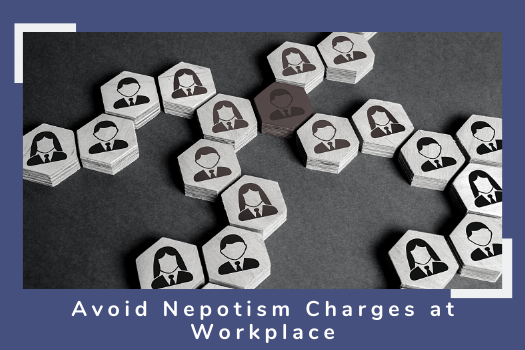Employee Engagement, Employee Relations, Rewards and Recognition
Employee engagement is a critical contributor to business success and growth. However, organizations and HR are finding it increasingly difficult to engage employees and get them to be more productive and perform to the best of their abilities. The Gallup State of the Global Workplace Report 2017 found that nearly 85% of the employees across the globe fall in the categories of actively disengaged or not engaged. And even the best talent can feature in the actively disengaged category because the organization/ manager/ leader/ HR is able to make them feel valued or motivated to work. They actively or passively keep looking for newer jobs and better jobs and when it comes around, they move on. Organizations are at a growing risk of losing the best talent if they are not able to engage them. The inability to retain talent is detrimental in today’s day and age when the war for talent is on.
Accordingly, HR and organizations are making efforts to improve employee performance and productivity through a range of employee engagement initiatives and management measures such as higher remuneration, lavish perks, CSR initiatives, crafting positive work environments and so on. In this scheme of things, one very potent management tool that could turn around employee engagement and help create a culture of high performance but is most underrated is FEEDBACK.
What makes Feedback such a potent and valuable tool?
Feedback by definition is about providing information/ reactions/ statements of opinion about a person’s performance of a task that serves as a basis for improvement. Contrary to popular belief, it is not limited to criticism or have to be negative all the time. Negative feedback and criticism are but types of feedback and ones that managers and leaders from consciously stay away from. There are other preferred types of feedback – positive, constructive, feedforward, praise, instructional, motivational, etc. – that must be given at the right time, in the right way and in the right place. Put differently, feedback needs to be effective and delivered in a way that employees are able to take actions based on it.
Effective feedback enables employees to
- Improve job performance by enhancing ability, valuing effort and recognizing results. It enables them to understand their performance from a third-person’s perspective, providing rich insights on strengths and weaknesses.
- Reduce mistakes on the job and increase their efficiency on the job, if provided consistently, clearly and constructively. Even top performers may have certain skill gaps (soft skills or interpersonal skills), inadvertent behavior and other deficiencies that effective feedback can help them rectify before it escalates into something bigger.
- Understand manager’s/ leader’s/ organization’s expectations from them and accordingly, set goals and objectives for the short and long terms.
- Resolve challenges that they are facing on the personal and professional front that is hindering their performance. It also enables them to remove uncertainties and
- Gain confidence and improve self-esteem and self-worth.
- Learn faster if the feedback is continuous and constructive.
- Engage in meaningful discussions and build positive workplace relationships.
- Feel more valued and it improves their morale, thereby, enabling them to be more engaged at work.
The Millennial Population and Feedback Culture
The millennials comprise over 30% of the world population and are making up an increasing percentage of the workforce as well. It is predicted that by 2025, they will occupy over 75% of the global workforce. Millennials, having grown up in the age of the rapid and constant feedback loops created by social media, seek instant feedback at work too as it helps them learn faster and grow on their jobs. When their need for instant and regular feedback is not met adequately, they feel disengaged at work and do not mind quickly moving onto an employer who will meet this demand.
Accordingly, several top organizations such as Deloitte, Adobe, Google, etc. have adopted a positive and regular feedback culture in place of the 20th Century tool of Annual Performance Reviews (APRs) which do not work well with the newer generations of employees. The numerous companies that have made this shift to a feedback culture have seen noticeable rise in productivity, performance and profitability and a reduction in absenteeism. This goes to show that an effective feedback culture has a high ROI.
Effective Feedback: How It should be?
- Regular: As discussed earlier, once in a year APRs are passé
- Timely: It is ineffective if you provide feedback to an employee months after you noticed something that needs changing. Effective feedback is proactive and as close to the event as possible.
- Specific: Vague feedback is ineffective. You need to let employees know of the specific context and instances based on which you are providing feedback for them to understand and use the feedback as actionable insights for the future.
- Constructive: Criticism is a big ‘NO NO’. Negative feedback should also be presented in a constructive way so that employees do not feel like they are attacked, and they are able to take corrective action, learn and grow. Effective feedback must be appropriate and must be delivered in a tactful, non-threatening manner.
- Dialogue: Effective feedback is always a dialogue between the employee and the leader/ manager/ peer/ coach providing the feedback as it ensures both parties understand each other’s viewpoints and are able to empathetic to each other. It cannot be a monologue delivered by one party.
- Personal: One-on-one feedback is the most effective. It fosters dialogue, mutual understanding and discussion on possible solutions and better interpersonal relationships.
Employee Mindset Impacts the Way They Process Feedback
It is important for everyone in the organization, whether employers or employees, to understand that all feedback does not have the same desired result. Its impact varies on how, when and by whom it is delivered and how the person receiving it processes the feedback cognitively. You may deliver feedback with utmost respect, empathy and care in a constructive manner, but it could still lead to deteriorating performance. This is because the employees receiving it may not be equipped to cognitively process the feedback the way it should be and the way you desire it to be perceived.
For instance, employees with a fixed mindset and feels any feedback to be an attack on them. With his/ her natural flight or fight instincts kicking it, they will either fight back/ argue with the person giving the feedback or not take the feedback seriously and continue the way they always work. Employees with a growth mindset, however, consider their skills and abilities to be malleable and look at feedback as a tool for learning and growth. So, it is key that organizations and HR work with employees to help change their mindset and equip them to leverage the powerful tool that FEEDBACK is.
Employees with personal traits such as low self-confidence and self-worth often find it difficult to process feedback. If they receive constructive feedback about things they can improve on and things they can avoid, their confidence and self-worth further dips and their performance suffers. Similarly, employees who seek perfection in everything they do also find it difficult to take feedback. With positive feedback, they keep nitpicking on their performance, not giving due credit to themselves and with negative feedback, their stress levels go through the roof. It is key to work with such employees and enable them to process feedback better.
How to Give Effective Feedback?
The Key Do’s and Don’ts: Base your feedback on credible information and be descriptive while providing feedback. Try to focus your feedback on behavior rather than on the employee’s personality or character traits. Most importantly, avoid judgmental language or words. The place, time, content and way of delivery are critical in ensuring that feedback is perceived properly and used as actionable insight for performance improvement, learning and development.
Language Matters: Frame your thoughts appropriately, choose the right words and then deliver feedback in the most tactful and non-threatening manner as possible. For instance, using the word ‘but’ could be counterproductive as people tense up on hearing the word and it accentuates the negative feedback over the positive feedback. It would be better if you say something on the lines of, “You could do even better if..” or “better still…”, etc. as these do not take away from the positive feedback.
Listen: Whether you are giving or receiving feedback, you must learn to listen to the other person’s perspectives without interruptions, instead of hearing to argue or defend yourself.
Tying it up with action: Feedback is effective and productive only if it is tied to goal setting, an action plan and some review parameters, else, it would be a waste of work hours.
Embed Feedback in Your Workplace Culture
Giving and taking feedback on a regular basis must become a key part of your organizational culture. This will ensure that every employee and leader and manager understand that feedback is the basis for professional and organizational development and that they should not shy away from seeking and providing feedback to their peers, managers and teams. Start with your leadership to ensure buy-in. HR and organizations must take measures to embed feedback in their workplace culture and make it an integral part of the job experience for everyone.






